One of the few moments of bipartisan acclaim during President Trump’s 2020 State of the Union address was when he highlighted additional financial support for Historically Black Colleges and Universities (HBCUs). Federal funding for HBCUs has increased by more than $100 million over the last two years, a 17% increase. Most of the candidates running in the Democratic Primary have pledged significant new investments in HBCUs, often in addition to broader policies on college affordability.
HBCUs occupy a small but important place in American higher education serving just 0.1 percent of the overall student population, but accounting for 20 percent of black students who complete bachelor’s degrees and 27 percent of African-American students with bachelor’s degrees in STEM fields, for example. Two out of five African American members of Congress attended an HBCU.
HBCUs also play an outsized role as incubators of black opportunity. As we have shown in a previous post, “The contribution of historically black colleges and universities to upward mobility”, drawing on data from Opportunity Insights, HBCUs perform well as engines of upward mobility. This is in large part because they draw in many students from lower-income backgrounds.
In this paper we consider a broader group of four-year colleges, those where Black students make up more than half of the student population. We compare these Majority-Black Colleges (MBCs) to Majority-White Colleges (MWCs) in terms of long-term student outcomes. We then consider possible explanations for differences that exist.
Measuring mobility into the middle class
The team at Opportunity Insights considers two factors when assessing the contribution of colleges to upward mobility:
- Access, a measure of the proportion of students coming from families in the bottom income quintile.
- Success, a measure of the proportion of this low-income group who make it into a higher quintile as adults.
Multiplying the access rate by the success rate gives an overall mobility rate for each institution. The combined rate thus takes into account both how many low-income students a college enrolls, and how those low-income students fare in terms of economic mobility.
The headline mobility measure used by Opportunity Insights focuses on students from families in the bottom 20% of the income distribution, and on movement from that bottom 20% to the top 20%. In broad terms, those who come from poor backgrounds but go on to be affluent themselves.
Given the focus of the Future of the Middle Class Initiative, we here use the Opportunity Insights data to produce a slightly broader measures of upward mobility. Specifically, our success measure will be the proportion of students from the bottom 20% who make it into the top 60% of the income distribution as adults, rather than the top 20%:

Our measure of mobility, then, combines access (proportion from bottom 20%) with success (proportion of those students who rise to the top 60%).
Majority-Black Colleges v. Majority-White Colleges
Restricting our analysis to four-year colleges, we identify the proportion of black students attending each institution. Not surprisingly, most institutions have less than 20% Black student enrollment (n=1,198). There is a slight spike in institutions that have over 80% Black student enrollment. Of these 44 colleges with more than 80% Black student enrollment, 41 are HBCUs:

We compare the 76 four-year colleges with over 50% Black enrollment (MBCs) to the 1,370 four-year colleges with over 50% white enrollment (MWCs). (There are 83 schools which are neither majority white or black, of which 16 were majority Hispanic and 2 were majority Asian enrollment).
Among the 76 MBCs, average black enrollment is close to 90%. Most (67) are HBCUs. At MWCs, average white enrollment is 82%, while average Black enrollment is less than 8%. There are many other differences. MBCs are smaller than MWCs on average, for example, enrolling just over half as many students.
The average mobility rate (into the top 60%) is much higher at MBCs than at MWCs. On average at MBCs 16.1% of students from the lowest income quintile end up in the third income quintile or higher, compared to 5.9% of low–income students at MWCs. We also compared the middle-class mobility rate for public vs. private 4-year schools, and for more selective and less-selective colleges. There were differences here, but none as striking as the mobility gap between MBCs and MWCs:

Access or success?
The mobility rate combines both access and success, however. So it is important to consider the contribution of both to the higher mobility rate of MBCs. The average access rate (i.e. proportion of students from the bottom 20%) is much higher at MBCs, at roughly 25%, than MWCs, at 8.8%. But what about success rates? The success rate is nearly 66% at MBCs, comparable to the 70% at MWCs:

As with HBCUs, it looks as if the superior mobility rates of MBCs are explained largely by their much greater enrollment of low-income students (i.e. access). It is striking however that the success measures between the two types are similar. In the earlier work by one of us (Reeves) we found lower success rates for HBCUs than colleges overall, at least on the top-to-bottom Chetty measure. Colleges with higher rates of enrollment from Black and Hispanic students are shown to have lower upward mobility rates, in most studies, reflecting lower mobility overall. This may simply show that different success measures can produce rather different comparative results; and of course we need to keep in mind the small number of MBCs in the dataset. Nonetheless, there is enough evidence here to suggest that these colleges and universities may be managing to attract low-income students of color, and help them attain at least the middle rung of the income ladder as adults.
Something special about Majority-Black Schools?
Majority-Black Colleges are leaders in terms of access; and also seem to be performing similarly to MWCs in terms of success on our measure. The question is: why? Here we discuss 4 potential explanations for why these majority Black schools may be advancing the mobility of their students.
1. Culturally relevant, accessible, and available campus resources
Colleges with higher portions of Black students may have on-campus resources (including student organizations, Greek life, academic resources) that are culturally tailored toward their student population, thus advancing their academic and social experience. For example, Black Greek-letter organizations have been shown to enhance scholarship, leadership, social activism, and civic engagement outside of collegiate environments.
Socially and culturally relevant resources can improve retention rates and bolster assertive networking, as well as advancing communication and leadership skills, all skills which are useful beyond college. Additionally, schools with more students of color may have culturally relevant pedagogy. They may even teach the history of the students in the classroom, an affirming experience that many students of color do not receive in K-12 education, and that can lead to increased feelings of confidence and higher levels of achievement.
2. Friendly and supportive environment for Black students
Researchers have theorized that a supportive environment is a key contributor to HBCU Black student success. This may be true of Majority-Black institutions more generally. Seminal research in this area found that an HBCU environment is supportive when students feel free to make friends with their peers, faculty, and staff; engage in extracurricular activities; and have the opportunity to grow academically. While non-HBCUs will never have the exact college experience as an HBCU, some experiences can be partially replicated in academic spaces where there is sizable Black student enrollment, and when they are replicated, lead to more positive student experiences.
With a larger proportion of Black students at the university there may be a reduction in daily racial “microaggressions”, resulting in improved interpersonal interactions between students, faculty, and staff, as well as fewer hate crimes and an associated internalized feeling of safety and comfort on campus.
3. Increased likelihood of faculty and staff of color
Educational institutions with many Black students may both naturally attract and purposefully recruit faculty and staff of color, particularly Black faculty and staff. Students of color perform better when educated by teachers that look like them. This may be in part because these students feel less discriminated against and more supported by faculty that looks like them. When Black students have Black teachers, they enter the classroom feeling as if they have not been pre-judged, according to a 2012 study of Black graduate students. These same-race teachers may also serve the students as mentors, advocates, role models, and cultural translators. Having these mentors as part of their social network may help to advance their career development and thus, the students’ social mobility.
4. Within-race social capital
It is also possible that there is a unique type of social capital associated with attending an MBC that confers benefits beyond graduation. Some research has shown that same race connections can serve as a protective factor and help to bolster outcomes for students.
Two examples of this within-race social capital include robust access to involved alumni networks reaching beyond one’s alma mater – evidenced by active HBCU alumni networks that include graduates of various universities – and strategic partnerships with major U.S. companies or other top schools – for example, Boeing’s recent partnership with the Thurgood Marshall College Fund to provide scholarships and aerospace career development for students of 8 different HBCUs. This relationship came about largely because a senior executive at Boeing is a Morehouse alum – the only historically Black men’s college in the nation.
Getting serious about race equity
While this analysis focused on the two extremes of Black college student enrollment – at majority-Black and majority-White colleges – the reality is that Black college students attend Historically Black Colleges and Universities, majority-Black schools, majority-White schools, and many institutions in between. If we are serious about reducing inequality and advancing mobility for Black people, a key place to intervene is at college. We have the opportunity to learn from majority-Black institutions, including HBCUs, about how to tailor resources, and encourage safe and welcoming campus environments to improve mobility and hopefully reduce the disparity in intergenerational mobility by race.
The Brookings Institution is committed to quality, independence, and impact.
We are supported by a diverse array of funders. In line with our values and policies, each Brookings publication represents the sole views of its author(s).
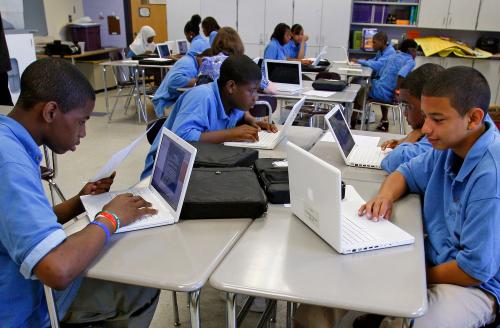
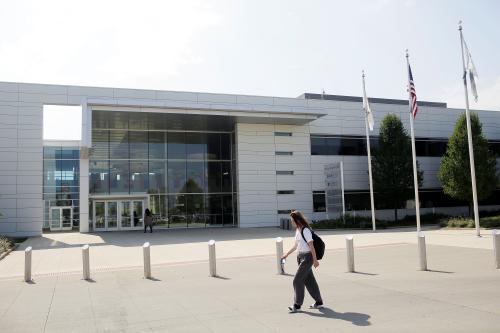
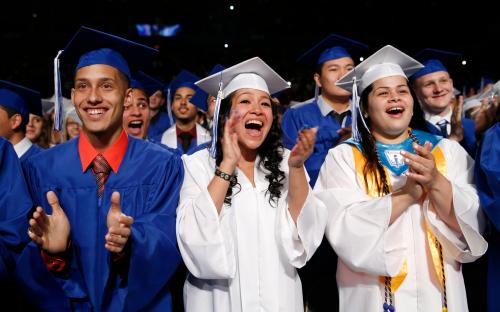
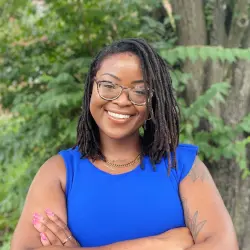


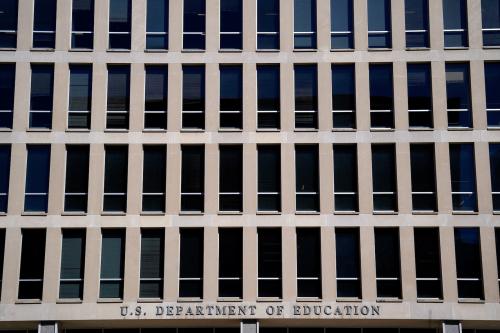

Commentary
College for people like me: How majority-Black campuses boost social mobility
March 2, 2020